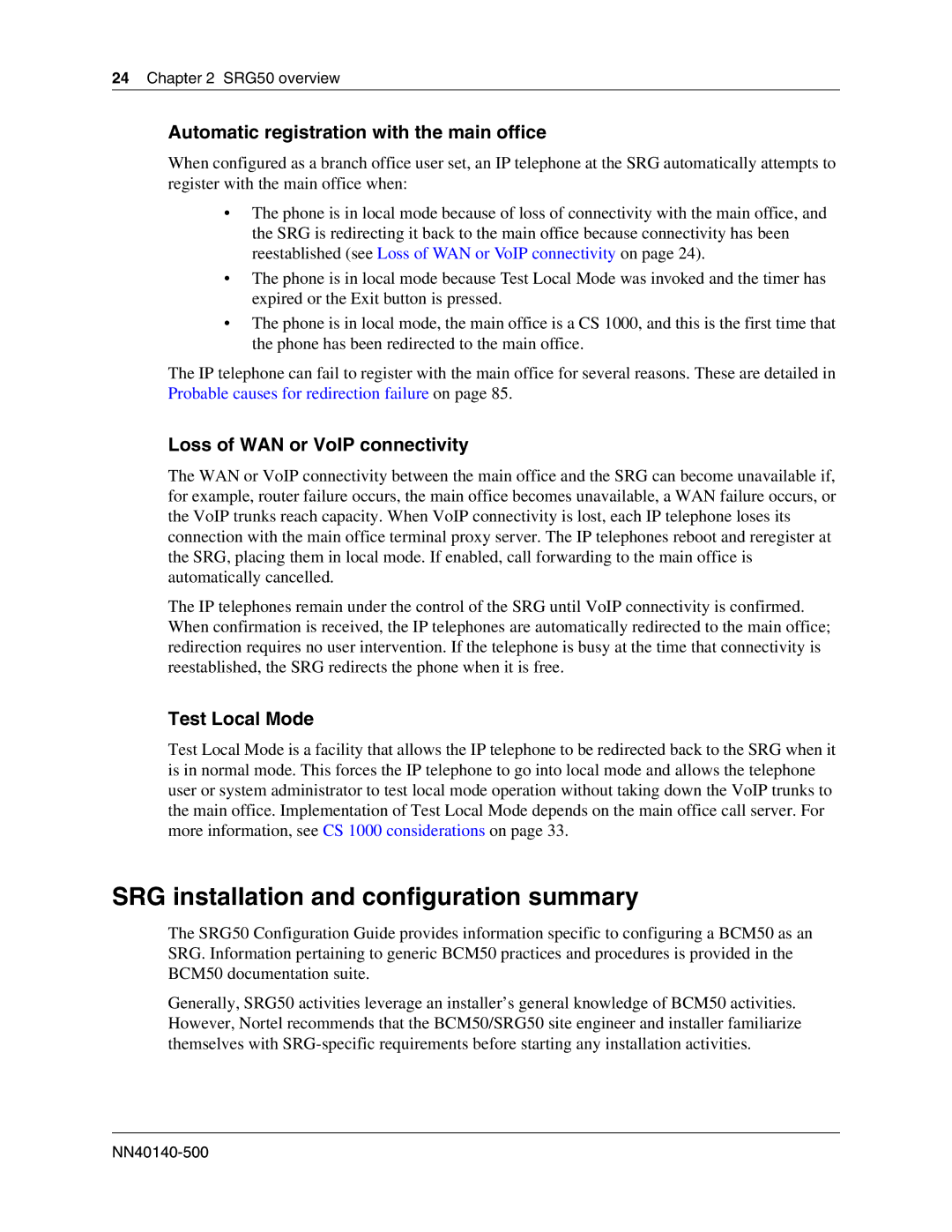
24Chapter 2 SRG50 overview
Automatic registration with the main office
When configured as a branch office user set, an IP telephone at the SRG automatically attempts to register with the main office when:
•The phone is in local mode because of loss of connectivity with the main office, and the SRG is redirecting it back to the main office because connectivity has been reestablished (see Loss of WAN or VoIP connectivity on page 24).
•The phone is in local mode because Test Local Mode was invoked and the timer has expired or the Exit button is pressed.
•The phone is in local mode, the main office is a CS 1000, and this is the first time that the phone has been redirected to the main office.
The IP telephone can fail to register with the main office for several reasons. These are detailed in Probable causes for redirection failure on page 85.
Loss of WAN or VoIP connectivity
The WAN or VoIP connectivity between the main office and the SRG can become unavailable if, for example, router failure occurs, the main office becomes unavailable, a WAN failure occurs, or the VoIP trunks reach capacity. When VoIP connectivity is lost, each IP telephone loses its connection with the main office terminal proxy server. The IP telephones reboot and reregister at the SRG, placing them in local mode. If enabled, call forwarding to the main office is automatically cancelled.
The IP telephones remain under the control of the SRG until VoIP connectivity is confirmed. When confirmation is received, the IP telephones are automatically redirected to the main office; redirection requires no user intervention. If the telephone is busy at the time that connectivity is reestablished, the SRG redirects the phone when it is free.
Test Local Mode
Test Local Mode is a facility that allows the IP telephone to be redirected back to the SRG when it is in normal mode. This forces the IP telephone to go into local mode and allows the telephone user or system administrator to test local mode operation without taking down the VoIP trunks to the main office. Implementation of Test Local Mode depends on the main office call server. For more information, see CS 1000 considerations on page 33.
SRG installation and configuration summary
The SRG50 Configuration Guide provides information specific to configuring a BCM50 as an SRG. Information pertaining to generic BCM50 practices and procedures is provided in the BCM50 documentation suite.
Generally, SRG50 activities leverage an installer’s general knowledge of BCM50 activities. However, Nortel recommends that the BCM50/SRG50 site engineer and installer familiarize themselves with
